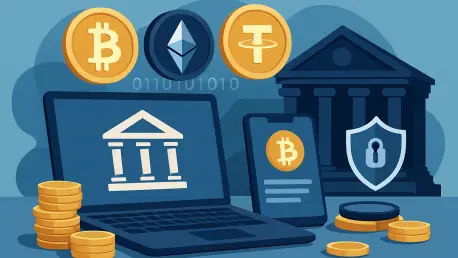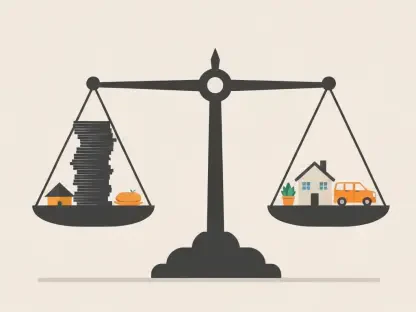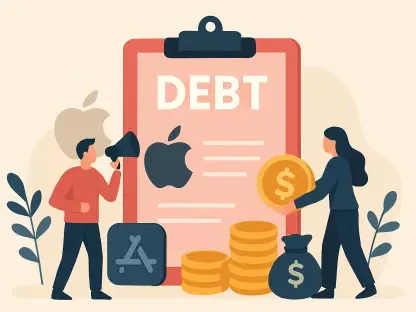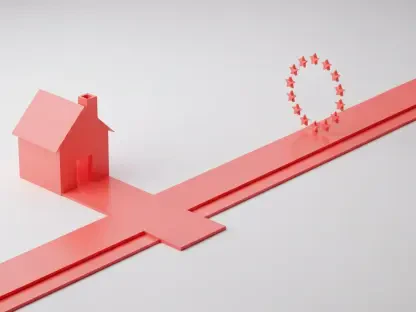I’m thrilled to sit down with Priya Jaiswal, a distinguished expert in banking, business, and finance, whose deep knowledge of market analysis and international trends offers invaluable insights into the evolving world of digital finance. Today, we’re diving into the groundbreaking developments surrounding Telcoin Digital Asset Bank (TDAB), which recently received final charter approval from the Nebraska Department of Banking and Finance. Our conversation explores the significance of this milestone, the launch of TDAB’s stablecoin eUSD, and how this innovation could reshape banking and digital assets in the U.S. We’ll also touch on TDAB’s mission to support community banks in navigating the blockchain era and the broader implications for the financial industry.
How does the final charter approval from the Nebraska Department of Banking and Finance impact Telcoin Digital Asset Bank’s operations and future plans?
This approval is a game-changer for TDAB. It essentially gives us the green light to operate as a full-fledged digital asset bank, which means we can now accept cryptocurrency deposits, issue crypto loans, and connect to Federal Reserve payment systems. Before this, we were limited in scope, working under conditional approval. Now, we have the regulatory backing to fully integrate blockchain technology into traditional banking services, opening up a new frontier for how money can move faster and more transparently.
What specific services are you most excited to introduce with this charter, and why?
I’m particularly thrilled about rolling out crypto deposits and loans. These services allow us to bridge the gap between digital assets and everyday banking. For instance, enabling customers to deposit their cryptocurrencies with us and use them as collateral for loans brings a level of utility and security that’s been missing in the crypto space. It’s about making digital assets a practical part of financial life, and I think this will attract a wide range of users, from tech-savvy investors to traditional bank customers curious about digital currencies.
Why do you think this charter approval is being described as a historic moment for the U.S. banking system?
It’s historic because TDAB is proving that a bank can responsibly integrate blockchain and digital assets while staying fully compliant with U.S. regulations. This isn’t just about one bank; it’s about setting a precedent for how the entire financial system can evolve. We’re showing that innovation and regulation don’t have to be at odds. This could encourage other banks to explore digital assets, ultimately modernizing how money and payments work in this country.
How does TDAB’s approach to banking differ from that of traditional U.S. banks?
Unlike traditional banks that operate primarily within legacy systems, TDAB is built from the ground up to incorporate blockchain technology. We’re not just tacking on digital solutions; our core operations are designed for speed, transparency, and affordability through on-chain processes. For example, transactions that might take days with traditional banks can happen almost instantly with us. It’s a fundamental shift in how banking can function, focusing on efficiency and accessibility in ways traditional models often can’t match.
Can you walk us through what eUSD, TDAB’s new stablecoin, is and how it’s designed to work?
Absolutely. eUSD is our stablecoin, pegged to the U.S. dollar to maintain a stable value, which is crucial for everyday use. It’s backed 1:1 by U.S. dollar deposits and short-term treasuries held in reserve, ensuring that every eUSD in circulation has real, tangible value behind it. This design makes it a reliable form of digital cash that operates on public blockchain rails, offering transparency and speed for payments and transactions in a way that’s accessible to anyone.
What sets eUSD apart from other stablecoins or similar digital tokens recently launched by major banks?
What makes eUSD unique is its focus on being a free-flowing payment stablecoin rather than a depository token tied to a specific bank’s balance sheet. It’s built for seamless, transparent transactions on public blockchain networks, representing fully reserved digital dollars. This emphasis on accessibility and interoperability allows eUSD to function as a true digital currency for everyday use, which differentiates it from other offerings that might be more limited in scope or tied to proprietary systems.
There’s a vision behind eUSD that it’s about upgrading the technology of money and payments rather than disrupting the banking system. Can you elaborate on what that means?
The idea is to enhance, not replace, the existing financial framework. With eUSD, we’re leveraging blockchain to make money move faster and cheaper, without pulling funds out of the banking system. It’s about modernizing the infrastructure—think of it as upgrading from dial-up internet to high-speed broadband. We’re creating a system where payments and transactions can happen at the speed of the internet, all while maintaining the stability and trust of traditional banking. It’s an evolution, not a revolution.
How do you see eUSD potentially changing the way everyday people manage their finances?
I believe eUSD can make a big difference in daily financial life by cutting down on the time and cost of transactions. Imagine sending money to a friend or paying a bill instantly, without hefty fees or waiting periods. For people who are unbanked or underbanked, eUSD offers a way to participate in the digital economy without needing a traditional bank account. Over time, it could become a go-to tool for quick, secure, and affordable financial interactions, reshaping how we think about money on a practical level.
TDAB has a goal of helping community banks get involved with digital assets. Why is this such an important focus for your organization?
Community banks are the backbone of many local economies, but they often lack the resources or expertise to dive into digital assets on their own. We see a huge opportunity to support them in staying relevant in a rapidly changing financial landscape. By partnering with these smaller institutions, TDAB can help them offer blockchain-based services safely and compliantly, ensuring they don’t get left behind as larger banks dominate the digital space. It’s about leveling the playing field and fostering innovation across the board.
What are some of the biggest hurdles community banks face when trying to adopt digital asset services, and how does TDAB plan to help overcome them?
The main challenges are technical expertise and regulatory compliance. Most community banks don’t have the in-house knowledge or budget to build blockchain infrastructure or navigate the complex rules around digital assets. TDAB steps in by providing the technology and regulatory framework they need. We act as a bridge, offering tools and guidance so these banks can integrate digital services without starting from scratch. Our goal is to make it seamless for them to connect to blockchain finance while staying competitive.
What’s your forecast for the future of digital assets and stablecoins in the U.S. banking system over the next decade?
I’m optimistic that digital assets and stablecoins will become mainstream in U.S. banking within the next ten years. As regulatory frameworks continue to evolve and more banks like TDAB pave the way, we’ll see broader adoption across the industry. Stablecoins, in particular, have the potential to revolutionize payments by making them faster, cheaper, and more transparent. I expect we’ll see a hybrid system where traditional and digital finance coexist, with stablecoins playing a key role in everyday transactions and cross-border payments. The challenge will be balancing innovation with stability, but I believe we’re on the right path to achieving that.









